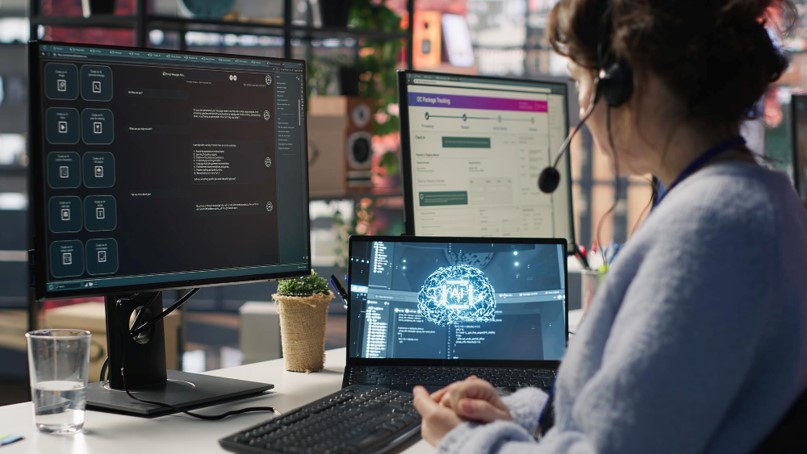
The Age of Agentic AI: Are You Ready for the Next AI Revolution?
Unlock the power of Agentic AI. Move beyond Generative AI to automate workflows and drive growth. Discover why 80% of Indian businesses are preparing for this shift.
Let’s face it — Meghalaya has no shortage of potential.
It has some of India’s most culturally rich communities, resilient educators, and grassroots governance systems that care.
But it also faces the same challenges every remote or under-connected region does:
Bottlenecks in service delivery
Unequal access to quality education
Red-tape slowing down governance
Limited visibility of citizen needs in real time
Now here’s the good news:
AI doesn’t have to be a buzzword used only in Delhi, Bangalore, or Silicon Valley.
It can — and should — work for places like Meghalaya.
And it’s already starting to.
According to Meghalaya Monitor, the state is banking big on AI — leveraging real-time data analytics through the Vidya Samiksha Kendra (VSK) platform developed by Deepspatial. This system monitors student attendance, academic performance, and the midday meal program with AI-powered insights to drive accountability and targeted interventions.
Meghalaya is also introducing students to AI, robotics, and IoT in classrooms — an early push toward digital literacy at the school level.
Still, there’s a long road ahead.
So, what if we used AI not to replace people, but to amplify educators, automate red-tape, and deliver smarter public services?
Here’s a practical step-by-step roadmap to make that happen.
Problem:
Many rural students lack access to consistent, high-quality teaching staff — especially in STEM subjects.
Solution:
Deploy lightweight AI learning assistants (offline-friendly, multilingual) in classrooms and learning centers.
How:
Partner with open-source or NGO-backed platforms like Khan Academy plus AI tutor layers
Use speech-to-text AI to translate and assist in Khasi, Pnar, Garo, and English
Use local hosting or USB-driven apps in areas without stable internet
Outcome:
Real-time support for students even when teachers are stretched thin
Adaptive content delivery based on each student’s pace
Less dependence on central textbooks
Stat: According to UNESCO, personalized AI tutoring can improve learning outcomes by 30–50%, especially in underserved regions.
Problem:
Teachers spend more time on admin than mentoring. And when trained, they often lack AI exposure.
Solution:
Use AI to reduce admin work, and create local “AI Ambassadors” among teachers.
How:
AI tools for automatic grading, lesson planning, and student tracking
Launch “AI in Education” upskilling for teachers — via workshops or WhatsApp-based micro-courses
Recognize “AI Leader Schools” in each district to showcase innovation
A recent workshop in Shillong emphasized that AI can transform education only when teachers are involved in the process — not sidelined by it. The goal is to build trust and co-create impact.
Problem:
Government teams don’t always know what’s working — or where complaints are piling up.
Solution:
Build a lightweight, multilingual chatbot to collect citizen feedback, complaints, and ideas.
How:
Embed on district websites, or use on WhatsApp/SMS
AI can auto-sort messages by urgency and type (roads, education, health)
Push weekly summaries to local MLAs and departments
Stat: Smart complaint sorting reduced backlog by 47% in Hyderabad’s municipal pilot in 2023.
Problem:
Department files often get stuck between desks. Time-sensitive decisions take weeks or months.
Solution:
Use AI-based workflow automation to track file status, auto-remind officials, and suggest fast routes.
How:
Integrate into existing e-office systems with AI plugins
Use AI to estimate expected delays and flag bottlenecks
Auto-generate summaries for fast decision-making
Think of it as Google Maps for governance — less guessing, more progress.
Problem:
Many schemes are reactive — funding arrives after problems peak.
Solution:
Use AI models to predict needs in advance — for school supplies, health centers, flood relief, etc.
How:
Train ML models on weather data, enrollment patterns, roadwork delays
Use dashboards to guide local budget meetings
Involve local panchayats to validate and correct AI recommendations
This makes Meghalaya’s governance more proactive than reactive.
Problem:
Big plans often die in bureaucracy. Fear of failure slows down innovation.
Solution:
Launch 3–6 month AI micro-pilots in selected schools or departments.
How:
Pick one district for education and one for governance
Set clear, measurable outcomes (e.g., 30% faster response time, 20% test score lift)
Share wins publicly, even small ones
Innovation doesn’t need to be perfect. It just needs momentum.
Problem:
AI misuse, surveillance fears, and poor transparency can derail public support.
Solution:
Create Meghalaya’s own Ethical AI Guidelines and citizen consent practices.
How:
All tools must disclose what data they use
Parents and citizens opt in for data collection
Ensure tribal and linguistic communities are consulted in tech decisions
Trust isn’t optional — it’s the foundation of good tech.
Meghalaya isn’t behind. It’s just waiting for the right leap.
With the right approach:
AI doesn’t replace human judgment — it enhances it.
Public services don’t need more money — they need more intelligence.
Students don’t need more books — they need more support.
If you’re an official, educator, technologist, or NGO — now’s the time to build something meaningful.
Whether you want to pilot AI in your school, co-develop a governance chatbot, or fund responsible tech in Meghalaya —

Unlock the power of Agentic AI. Move beyond Generative AI to automate workflows and drive growth. Discover why 80% of Indian businesses are preparing for this shift.

Learn the top techniques to improve rankings for AI-generated content—covering semantic SEO, structured data, user engagement, and optimization tactics that boost visibility and credibility in search results.

Explore how Agentic Process Automation (APA) combines AI and automation to create intelligent systems that learn, adapt, and optimize workflows—without manual rules.
We’re happy to answer any questions you may have and help you determine which of our services best fit your needs.
We Schedule a call at your convenience
We do a discovery and consulting meting
We prepare a proposal